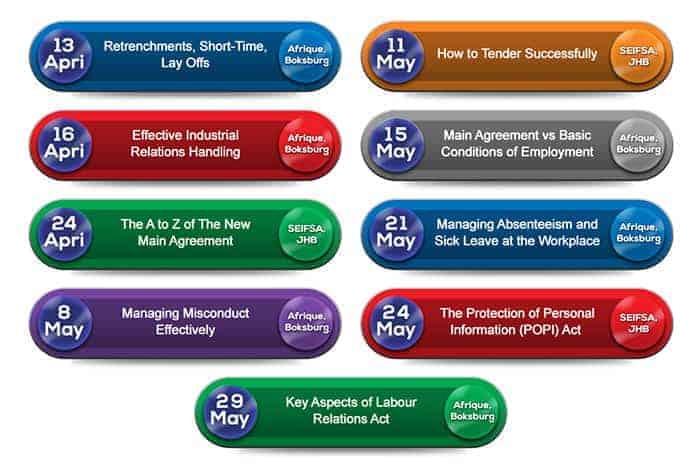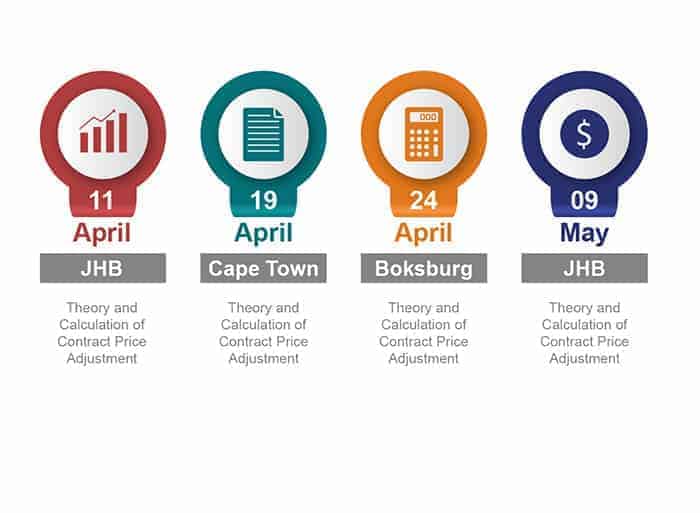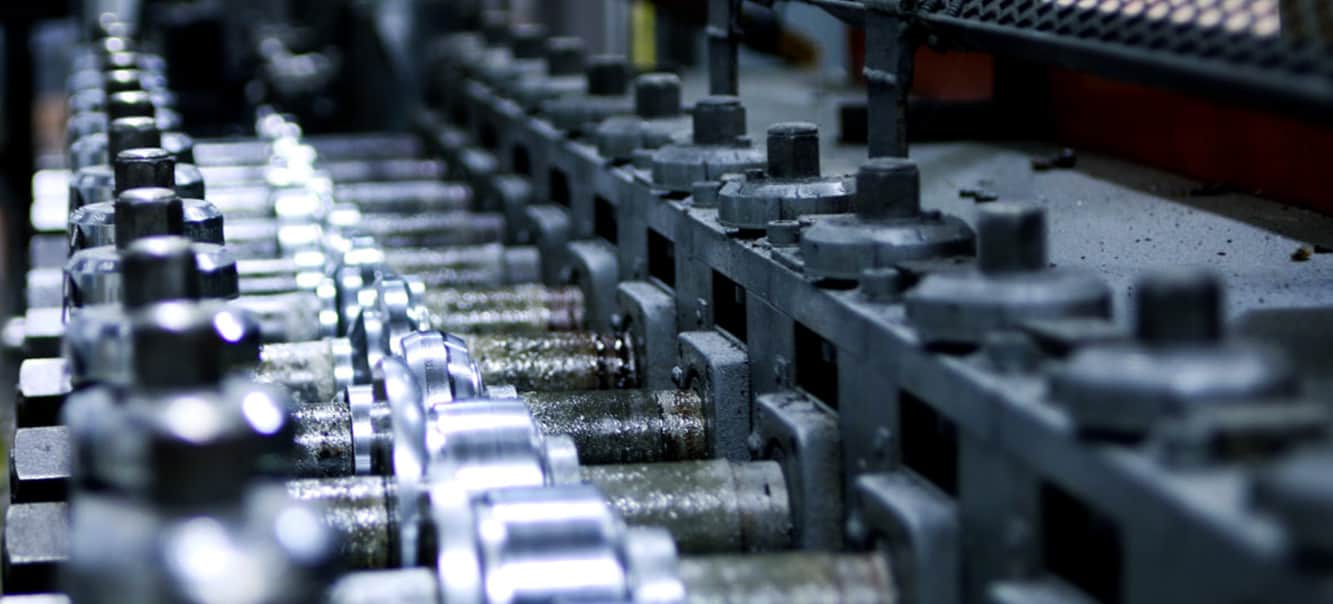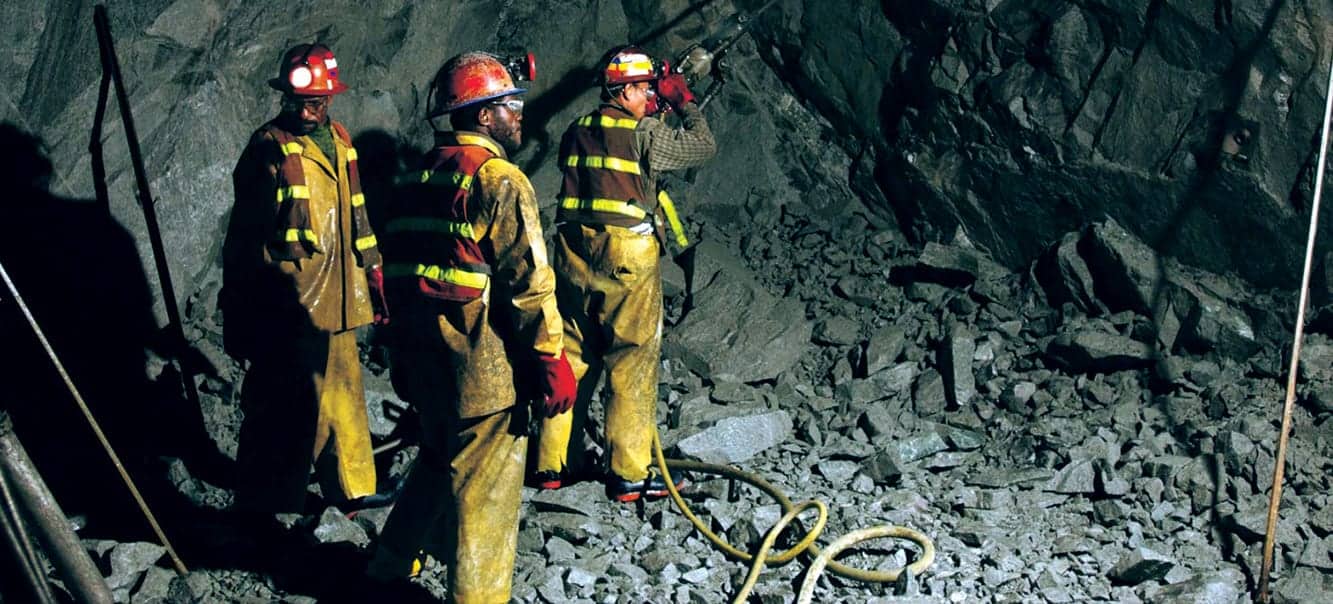ABSENTEEISM: THE OTHER SILENT KILLER
Just like high blood pressure is referred to as the silent killer, so, too, can absenteeism from work be regarded in a similar vein. It’s an administrative burden on Managers who need to be constantly aware of who the serial offenders are, monitor trends and ensure that whatever action they may take is fair and reasonable.
As much as R16 billion is said to be lost annually in South Africa due to absenteeism. SEIFSA, long known for its industrial relations expertise – and helping companies out of difficult situations such as strike action –acknowledges that absenteeism is a much more contagious phenomenon. Where strike action is loud and visible and provides gripping visuals for the evening television news, absenteeism gets under businesses’ skins, creeps into the culture and becomes a bottom-line killer. Underscoring its pervasiveness is the fact that more days are believed to be lost to absenteeism than to industrial action!
DEALING WITH ABSENTEEISM: PSCYCHOLOGY
Yes, you can be guided by technology. Today biometrics exist and you can have a record of everyone’s comings and goings.This works in some environments such as manufacturing businesses, where it is, without doubt, an important tool.. However, how do your strike a balance between a carrot and a stick? How do you communicate verbally and non-verbally that your employees are not incarcerated, yet remind them of the employer-employee contract? How, as a Manager, do you communicate that you understand the human condition and that life has its hurdles?
Unfortunately, there is no magic pill. However, there is process, open communication, establishing clear boundaries and the use of friendly timely reminders. There are, of course, individuals who will continue to be challenges and on whose ears your reminders will always be mute.
Absenteeism is a human problem. Humans are imperfect. The management of absenteeism is also a relationship challenge. The relationship between Managers and employees – and organisations and employees – can have a significant impact upon absenteeism, and good leadership can yield very positive results in diminishing absenteeism. For instance:
- Unhappy employees tend to stay away more often;
- Low moral contributes to unhappy employees;
- No communication by leadership may create unhappiness and low morale;
- A bad organizational culture may be a result of deficient employee communication; and
- Deficient employee communicationmay be a result of bad leadership.
MANAGING ABSENTEEISM: SYSTEMS
As a Manager, absenteeism is one of the most arduous and most administratively burdensome issues to manage. We have become used to convenience and automation making our lives easier. However, in this case, Managers are hamstrung because managing absenteeism still requires manual interventions such as:
- Observing,
- Documenting,
- Enquiring and
- Systematizing.
If Managers don’t do this, or if they are reluctant to do so, then being fair and reasonable simply goes out of the window. In addition, if Managers choose not to follow these steps, it informs us that there is a lack of interest or engagement with the problem of absenteeism. This attitude also renders any system that identifies and measures the causes of the absenteeism inaccurate at best and obsolete at worst.
Systems based on technology are only as good as the Managers inputting the information – the old problem of “garbage in, garbage out” manifests itself.
INCENTIVISING MANAGERS
Management needs to be actively interested in solving the problem. The effects of absenteeism must be quantified in their particular current work context – manufacturing is not the same as financial services. Above all, it should be emphasized that a one-size-fits-all response doesn’t necessarily address the root causes of absenteeism.
Fairness is about consistency to a set of immovable principles. Communication is a tool to achieve fairness. Documentation is a way of measuring apples with apples and creating a level playing field.
We know that there may be many other aspects to a job, but absenteeism deserves a consistent spot in your day. We advocate “15 minutes for absenteeism daily”. Get it over and done with early. That way you are always on top of your reporting.
HOW WE CAN HELP
With this in mind, our service is aimed at minimising legal risks and achieving practical outcomes which make the best financial and commercial sense for our members.
We want to help you before a problem becomes a legal problem.
Our Managing Absenteeism training workshops focus on:
- Definition of Absenteeism
- Forms of Absenteeism
- Absenteeism due to ill health
- Reasons for absenteeism
- Reducing absenteeism
- Absence without permission
- Authorised Leave and Unauthorised Leave: The difference?
- How to manage sick leave utilisation / abuse
- Do you need to recognise traditional healers?
- What constitutes a valid sick note and when can I insist upon one?
- What disciplinary action can be taken to deal with unauthorised absence?
- What constitutes authorised versus unauthorised absence?
How does unauthorised absence affect the leave and leave enhancement pay?
This workshop will provide you with guidelines to effectively manage these issues on a daily basis. - How to effectively manage sick leave, thereby minimising sick leave abuse
- How to identify and manage fraudulent medical certificates
- How to discipline employees who abuse sick leave
- Understand the issues surrounding traditional healers and paid sick leave
WHO SHOULD ATTEND
- Managers
- HR Personnel
- Supervisors
SEIFSA CONTINUES TO LEAD THE WAY
As a mandate-driven organisation, SEIFSA derives its mandate from the SEIFSA Council, which is an assembly of SEIFSA-affiliated employer Associations. At that forum, member Associations debate matters among themselves and the emerging consensus becomes SEIFSA’s mandate.
The Associations themselves get their mandates from the respective companies that are their members. That is when each company within the SEIFSA fold has an opportunity to get its voice heard and to influence the Association’s mandate.
SEIFSA is a Federation celebrating its 75th Anniversary this year. Companies are not direct members of SEIFSA. Instead, they are indirect or affiliate members through their respective Associations.
Our 23 member Associations are:
- Association of Electrical Cable Manufacturers of South Africa
- Association of Metal Service Centres of South Africa
- Cape Engineers and Founders’ Association (CEFA)
- Constructional Engineering Association (South Africa) (CEA)
- Eastern Cape Engineering and Allied Industries Association (ECEAIA)
- Electrical Engineering and Allied Industries Association
- Electrical Manufacturers’ Association of South Africa (EMASA)
- Gate and Fence Association
- Hand Tool Manufacturers’ Association (HATMA)
- Hot Dip Galvanizers Association Southern Africa (HDGASA)
- Iron and Steel Producers’ Association of South Africa (ISPA)
- Kwa Zulu Natal Engineering Industries Association
- Lift Engineering Association of South Africa
- Light Engineering Industries Association of SA
- Non-Ferrous Metal Industries Association of South Africa
- Plumbers and Engineers Brassware Manufacturers’ Association
- Pressure Equipment Manufacturers Association of South Africa (PEMA)
- Refrigeration and Air-Conditioning Manufacturers’ and Suppliers’ Association (RAMSA)
- SA Electro-Plating Industries Association
- SA Reinforced Concrete Engineers’ Association (SARCEA)
- South Africa Valve and Actuators Manufacturers’ Association (SAVAMA)
- South African Pump Manufacturers’ Association (SAPMA)
- South African Refrigeration and Air-Conditioning Contractors’ Association (SARACCA)
Twenty-one (21) of them are signatories to the 2017-2020 Main Agreement, with the last two Associations not being parties to the Main Agreement.
Should you wish to join one of the 23 SEIFSA-affiliated independent Employer Organisations and become part of a growing voice which talks authoritatively for and on behalf of member companies in this important sector of the economy, please contact Ms Theresa Crowley on (011) 298-9419 or theresa@seifsa.co.za in our office. She will be able to assist you.
Issued by:
Lucio Trentini
Tel: (011) 298 9400
Email: lucio@seifsa.co.za
Web: www.seifsa.co.za
SEIFSA is a National Federation representing 23 independent employers. Associations in the metals and engineering industries, with a combined membership of 1600 companies employing around 200 000 employees. The Federation was formed in 1943 and its member companies range from giant steel-making corporations to formed in 1943 and its member companies range from giant steel-making corporations to micro-enterprises employing few than 50 people.
SEIFSA ENCOURAGED BY LATEST CPI DATA INDICATING FURTHER INFLATION EASING
Johannesburg, 20 March 2918 – The Steel and Engineering Industries Federation of Southern Africa (SEIFSA) is encouraged by the latest consumer price index (CPI) figures indicating a continued easing of inflation, with the number still below 5% and well within the South African Reserve Bank’s (SARB) targeted band, the Federation’s Chief Economist, Michael Ade, said this morning.
Annual CPI was 4.0% in February 2018, down from 4,4% in January 2018. The index increased by 0.8% month on month in February 2018.
“The easing in the prices of goods and services augurs well for domestic consumers who have been facing a number of headwinds. Overwhelmed by the prospect of a possible VAT increase which is included in the CPI but excluded from the producer price index (PPI), embattled consumers are still facing tight credit conditions and the painful task of keeping their credit accounts in good standing.
The lower CPI is, therefore, welcomed as it will generally reduce pressure on over-indebted households and improve on the cost of living. Moreover, consumers’ ability to maintain repayments becomes even less precarious,” Dr Ade said.
He said the low rate is also good for the broader economy as no further tightening in monetary policy is required by the SARB in the forthcoming months. Instead, the bank has the luxury of pursuing expansionary monetary policy to further stimulate domestic demand and increase the consumption of finished industrial goods. He said the less stringent monetary policy will effectively stimulate additional production, reinforce the supply side dynamics and generally improve gross domestic product.
“The expectation is that the prevailing twin cycles of fairly low interest rates and low inflation will increase the number of active consumers entering the market and consuming finished manufactured products. Confidence in the manufacturing sector – including the metals and engineering cluster – edged up slightly in the first two months of quarter one this year and consumer confidence is gradually improving from a low base”, said Dr Ade.
He added that the changing political landscape was likely to inject further certainty into domestic consumers and the world at large. He said there was a good chance that the generally low inflation, increasing asset prices, recent political changes and an improving global economic environment will help boost consumer and business confidence, thereby providing impetus to the domestic business cycle.
“Increased consumer demand against the backdrop of a low CPI is generally good for the manufacturing sector, including its metals and engineering cluster, especially given that demand for industrial goods is usually based on demand for consumer goods which they help to produce,” Dr Ade concluded.
Issued by:
Ollie Madlala
Communications Consultant
Tel: (011) 298 9411 / 082 602 1725
Email: ollie@seifsa.co.za
Web: www.seifsa.co.za
SEIFSA is a National Federation representing 23 independent employers. Associations in the metals and engineering industries, with a combined membership of 1600 companies employing around 200 000 employees. The Federation was formed in 1943 and its member companies range from giant steel-making corporations to formed in 1943 and its member companies range from giant steel-making corporations to micro-enterprises employing few than 50 people.
SEIFSA CALLS ON ENVIRONMENT-FRIENDLY COMPANIES TO ENTER THE SEIFSA AWARDS FOR EXCELLENCE
Johannesburg, 18 March 2018 – Economic development and ecological challenges, including climate change and the depletion of natural resources, go hand in hand. As economies develop through industrialization, the quality of natural resources such as water and air tend to deteriorate as companies pursue growth.
“The adverse relationship between economic growth and ecological deterioration is a cause for great concern and dictates that companies should do everything it takes to ensure that they not only use the earth’s natural resources in their pursuits of profit, but also that they continuously rehabilitate and restore the environment to its natural form in order to preserve it for the generations that will come after us,” Steel and Engineering Industries Federation of Southern Africa (SEIFSA) Chief Executive Officer Kaizer Nyatsumba said today.
He said it was important for business to take the initiative of employing necessary technological innovations geared towards ensuring that their operations do not cause damage to the natural environment.
“It is for this reason, among others, that SEIFSA in 2015, established the SEIFSA Awards for Excellence. The Awards celebrate companies which take seriously the ecological challenges that confront the world and take the necessary steps to ensure that the natural environment is preserved,” Mr Nyatsumba said.
To celebrate companies that have gone out of their way to invest in the environment, SEIFSA will present the Environment Stewardship Award to an organization that has successfully implemented greening initiatives in its day-to-day business operations in 2017.
Other awards that form the seven categories of the SEIFSA Awards for Excellence are:
- The Most Innovative Company of the Year, which will be awarded to a company that showed the best level of innovation in research and development or production in 2017.
- The Most Transformed Company of the Year Award will be received by a company that showed the highest transformation level in the composition of its Board of Directors, Executive Management and Managerial Team in 2017. This award category pits companies employing fewer than 100 people against those of similar size, and companies employing more than 100 companies against others of similar size.
- The Best CSI Award will be presented to a company whose corporate social investment programme/s in 2017 had a major impact on the lives of its beneficiaries.
- The company rated the highest in customer service performance in 2017 will receive the Customer Service Award of the Year;
- This is the Decade of the Artisan, and an award will be made to the company that trained the highest number of artisans in 2017;
- The Health and Safety Award of the Year will be awarded to a company with the best legal compliance record in Health and Safety or the lowest Lost-Time Injury Frequency rate in 2017.
Mr Nyatsumba encouraged manufacturers operating in the metals and engineering sector to submit their entries for the seven categories before the deadline date of 29 March 2019. SEIFSA awards entrants will be assessed on their performance in the period 1 January 2017 to 31 December 2017. Participants can enter by visiting the SEIFSA Awards website (www.seifsaawards.co.za).
The Awards are open to all companies in the metals and engineering sector, and not only those that are members of Associations affiliated to SEIFSA.
Awards winners will be honoured at a ceremony that will take place at the IDC Conference Centre in Sandton on 24 May 2018.
Issued by:
Ollie Madlala
Communications Consultant
Tel: (011) 298 9411 / 082 602 1725
Email: ollie@seifsa.co.za
Web: www.seifsa.co.za
SEIFSA is a National Federation representing 23 independent employers. Associations in the metals and engineering industries, with a combined membership of 1600 companies employing around 200 000 employees. The Federation was formed in 1943 and its member companies range from giant steel-making corporations to formed in 1943 and its member companies range from giant steel-making corporations to micro-enterprises employing few than 50 people.
IRLS WORKSHOPS – APRIL TO MAY 2018
EC WORKSHOPS – APRIL TO MAY 2018
SHEQ WORKSHOPS - APRIL TO MAY 2018
CALLING ALL EXECUTIVES
Can you answer these 4 Industrial Relations & Legal Compliance confidently?
- Can you ensure a water tight dismissal?
- Do you know the difference between authorized and unauthorized leave?
- Can you identify the right form of evidence?
- Can you identify the 8 conditions for processing personal information?
The POPI Act Comes Into Effect In 2018
Staying Current Is Your Legal And Ethical Duty
Book for our Industrial Relations & Legal Services Workshops today!
SEIFSA WELCOMES REBOUND IN METALS AND ENGINEERING SECTOR IN JANUARY 2018
Johannesburg, 13 March 2918 – The latest preliminary seasonally-adjusted production data published by Statistics South Africa (Stats SA) today reflect an increase in output in the metals and engineering (M&E) sector, in line with the broader manufacturing sector which increased by 2.5% in January 2018 when compared with January 2017.
The data indicated that production in the M&E sub-components increased by 5.1 percentage points in January 2018 on a year-on-year basis when compared to January 2017, and by 2.1 percentage points in January 2018 on a month-to-month basis when compared to December 2017.
“The output performance of the M&E cluster is welcomed and the expectation is for the positive growth path to continue, as all stakeholders within the cluster and the broader manufacturing sector step up efforts to boost overall production. The performance of the M&E cluster generally augurs well for the broader domestic economy and hopefully will significantly boost the real Gross Domestic Product (GDP) for quarter 1 of 2018,” Steel and Engineering Industries Federation of Southern Africa (SEIFSA) Chief Economist Dr Michael Ade said today.
Dr Ade said although the past nine months to the end of quarter four 2017 have seen the real GDP recover from the contraction that marked the previous nine months, challenges to the supply side of the economy and especially in industrial production still prevailed. He said the benefits of a slight up-tick in production in the M&E cluster in 2017 was still not felt by local companies due to prevailing economic challenges, with the production trend still remaining variable and being largely pro-cyclical.
“It is clear that while the recent political forces of change have the potential to improve on perception, credit worthiness and the output stance of the domestic economy, there is still more work to be done in all industrial sectors in general and in the manufacturing sector in particular. The contribution of the manufacturing sector to the broader economy has declined over the years, from roughly a 24% contribution to GDP in the 1990s to a low 12.29% in 2017, with dire consequences on jobs levels,” Dr Ade said.
He said that, moreover, the variability in output in the manufacturing sector – including its M&E sub-components in the years after the 2014 crisis – was still evident, underscoring the need to continue exploring ways of reviving the fortunes of the sector.
“Clearly, there is still more work to be done and all stakeholders have to pool resources together to ensure a return to the glorious growth levels last recorded in the early 1990s. Accordingly, a continuous rebound in production is needed if the manufacturing sector is to regain its position as the main contributor to the broader economy.
“This objective is possible, given the improvement in business confidence and sentiments since the beginning of this year, against the backdrop of a domestic political shift,” Dr Ade concluded.
Issued by:
Ollie Madlala
Communications Consultant
Tel: (011) 298 9411 / 082 602 1725
Email: ollie@seifsa.co.za
Web: www.seifsa.co.za
SEIFSA is a National Federation representing 23 independent employers. Associations in the metals and engineering industries, with a combined membership of 1600 companies employing around 200 000 employees. The Federation was formed in 1943 and its member companies range from giant steel-making corporations to formed in 1943 and its member companies range from giant steel-making corporations to micro-enterprises employing few than 50 people.
AMCU’S INTENDED PROTEST ACTION ON 20 MARCH 2018
11 March 2018Latest News,Industrial Relations
Introduction
As you may be aware from recent media reports, the Association of Mineworkers and Construction Union (AMCU) is preparing for a protest action in the form of a one-day national strike on Tuesday, 20 March 2018.
This Management Brief provides some basic background to the issue and guidance on dealing with the intended protest action
Background to the AMCU Stay-Away
On 29 August 2017 AMCU submitted a Section 77 (1)(b) notice confirming its intention to proceed with a socio-economic protest strike action “due to the failure of the Department of Mineral Resources to ensure the socio-economic welfare of workers through proper regulation and enforcement.”
AMCU has subsequently given notice to NEDLAC in terms of Section 77 (1)(d) of the Labour Relations Act, that they will embark on a nationwide protest action on 20 March 2018.
Protest Action and the Labour Relations Act
The Labour Relations Act (LRA) permits trade unions such as AMCU to undertake protected protest action to promote the social and economic interests of workers, provided that they observe the procedural requirements contained in Section 77 of the Labour Relations Act 66 of 1995.
It is important to note that protest action in terms of Section 77 of the LRA is only legal or protected if the issue in dispute has been considered or finalised by NEDLAC and the union or federation (in this case AMCU) has given 14 days’ notice to NEDLAC of its intention to proceed with such protest action. In the absence of these conditions, any protest action would not be protected.
The NEDLAC Section 77 Standing Committee has determined the notice to be compliant with the administrative requirements of the LRA.
Consequently, AMCU members participating in any action on 20 March 2018 will be protected by the normal rules regarding protected strikes, namely: no work, no pay and no disciplinary action.
Management Guidelines on Possible Absenteeism on Tuesday, 20 March 2018
SEIFSA recommends that management adopt the following course of action in dealing with any stay-away from work on 20 March 2018:
- Inform workers (i.e. members of AMCU) that any absences related to the protest action will be treated on the following basis:
- no work, no pay;
- a shift for leave pay and leave enhancement pay qualification purposes will be lost in respect of the day’s absence; and
- any overtime worked during the course of the week will be paid at ordinary rates to make up for the lost ordinary working hours from Tuesday, 20 March 2018.
The Staff of the SEIFSA Industrial Relations and Legal Services Division are available on (011) 298-9400 to provide any further advice and/ or assistance to management on the contents of this management brief.










